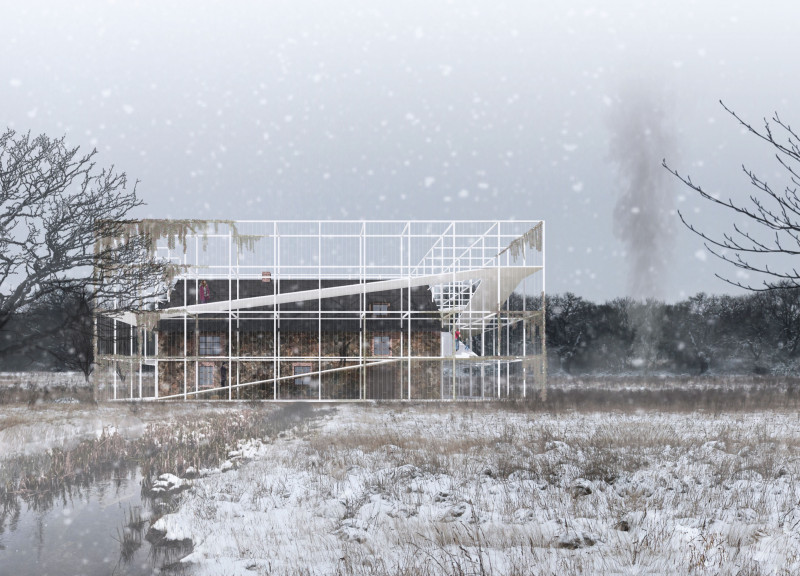5 key facts about this project
“Touch the Barn” is an architectural project that combines historical preservation with contemporary design, creating a space for meditation and interaction with nature. Situated within a historically significant barn structure, the project maintains the integrity of the original building while introducing modern elements that enhance usability. The design aims to foster a tactile experience, encouraging visitors to engage physically with the materials and forms of the architecture.
The project functions as a community gathering space and a meditation retreat, providing areas for shared activities, contemplation, and reflection. The layout includes a main event hall, a silence chamber, and accommodations, each designed to promote comfort and accessibility. The architectural approach emphasizes strong connections between the interior and the surrounding landscape, allowing for dynamic interactions throughout different seasons.
Innovative Structural Integration The design strategically merges the existing barn with new construction elements that emphasize transparency and openness. Lightweight, transparent modules are introduced in the form of access ramps, allowing for smooth navigation around the structure while inviting natural light. The use of local natural stone and clay brick not only reinforces a sense of place but also promotes sustainability through locally sourced materials. The incorporation of a steel grid facilitates the growth of greenery, creating an organic integration of nature with the built environment. This approach signifies a departure from traditional architectural designs by prioritizing ecological interaction and experiential learning.
Sensory Design Elements The architecture of “Touch the Barn” is characterized by its varied materiality, which offers multiple sensory experiences. Natural wood provides warmth in interior spaces, while stones and bricks create a grounded atmosphere. The careful selection of materials enhances the project's identity and ensures that it resonates with community values. Spaces designated for quiet reflection, such as the silence chamber, are intentionally designed to isolate external noise, promoting deeper meditation and contemplation. Inviting visitors to physically engage with different textures fosters a more profound connection with both the architecture and the environment.
For those interested in a comprehensive understanding of the project, further exploration of architectural plans, sections, and designs will provide deeper insights into the innovative elements and thoughtful approaches that define “Touch the Barn.” The successful blend of historical context with contemporary architectural ideas exemplifies how modern design can enhance human interaction with space and nature.


























